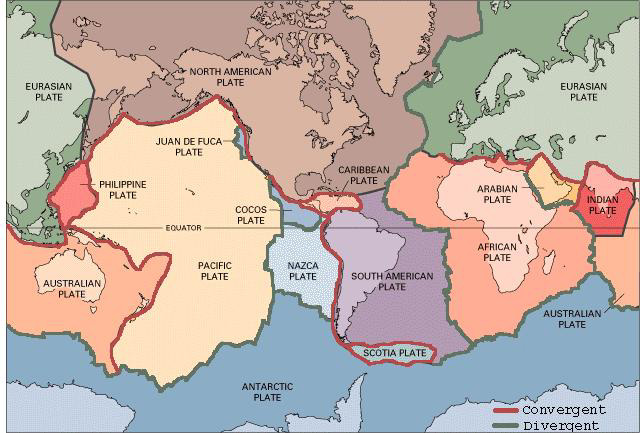
Back to the index page for the images of sand
The title page and table of contents for this set of web pages
e-mail to Railsback (rlsbk@uga.edu)
Railsback's main web page
The map on this page shows the locations of the Earth's tectonic plates. The convergent boundaries have been outlined in red and the divergent boundaries have been outlined in green.
Convergent boundaries are where two tectonic plates move against each other causing one plate to slide underneath the other plate in an event called subduction. When an oceanic plate collides with a continental plate, the oceanic plate will always be subducted beneath the continental plate. Convergent boundaries are the locations for such features as mountain ranges, volcanoes and island arcs.
Divergent boundaries are the location of new crust being added to the tectonic plate, and thus filling the void left as the plates move outward. Mid-ocean ridges are the locations of divergent boundaries.
Continental margins that are the location for convergent activity are considered active margins on our website. Continental margins that are not affected by tectonic activity are considered passive margins. To learn more about the mineral and rock content of sands found in specific margins visit our Introduction to Beach and Shoreline Sands webpage.
 |
|
Source for map: Eastern Publications Group Web Team, 2001, Major tectonic Plates of the World: http://geology.er.usgs.gov/eastern/plates.html.
Back to the index page for the images of sand |